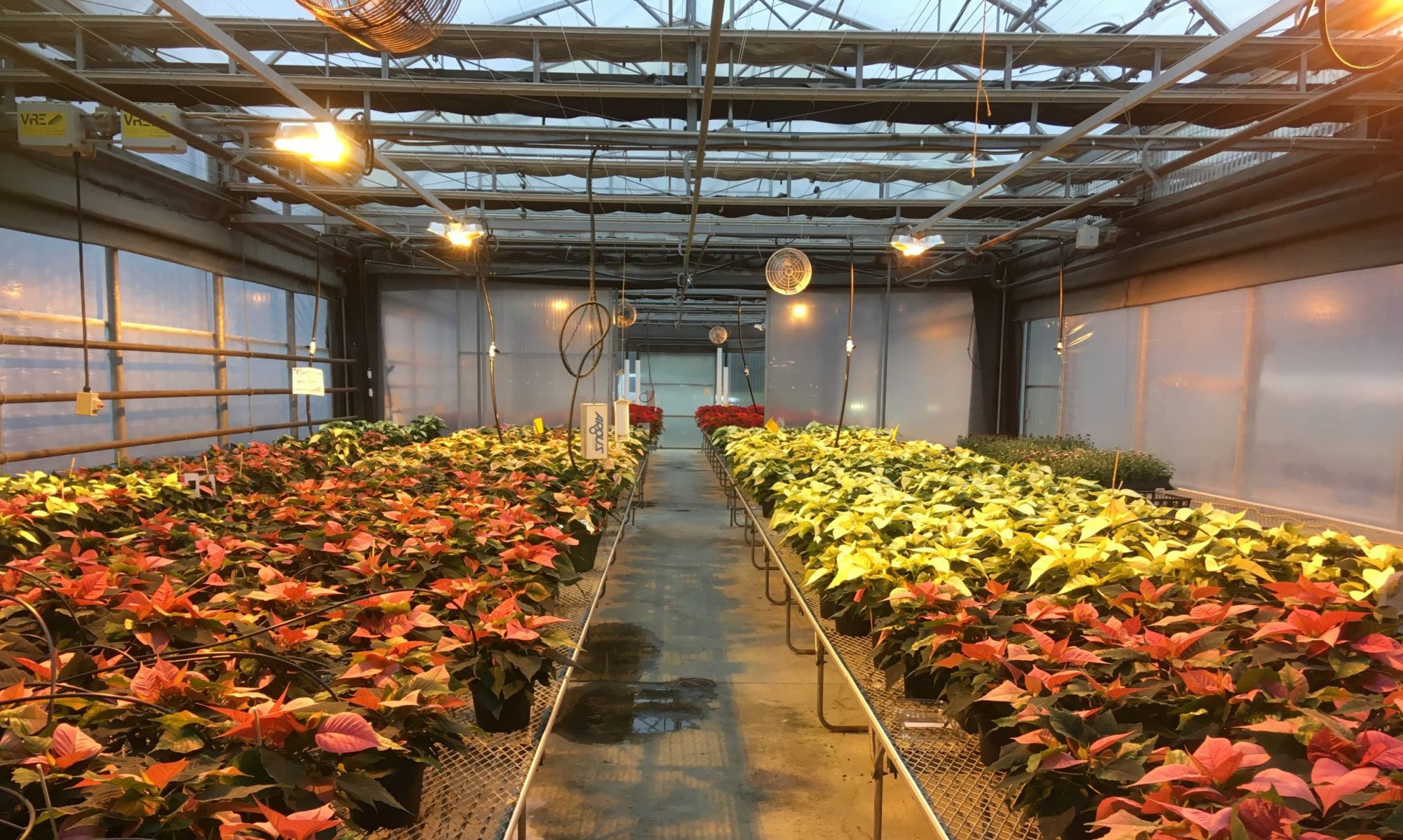Grower’s Notes – Pinching
Week Number: 35
Environmental Conditions:
Day: Heating Setpoint 18C Cooling Setpoint 24C
Night: Heating Setpoint 18C Cooling Setpoint 24C
Supplemental Lighting: 14 hours of daylight required. Supplemental lights via HPS lights from 6am-8am and again from 6pm-8pm. If light levels drop 200 W/m2 for more than 30 minutes between 8am and 6pm the supplemental lighting will also turn on.
Hours of Black Out: N/A
Nutrient:
EC target is 1.5 – 2.0 pH target is 5.7 – 6.3
EC N/A pH N/A
Watering/Fertilizer:
I watered the entire 4” and 6” crop with CAN03 fertilizer at 200ppm at an injection ratio of 1:100 on Monday, August 24. I determined the plants required water by assessing soil colour and weight. I also wanted to ensure plants were well hydrated for the scheduled pinch on August 25 and August 27. It took me 1.5 hours to water 1700 plants. I held the water nozzle over each pot until the fertilizer water filled the reservoir of the pot. I moved on to the next pot in a predictable pattern, moving 6 pots away from me and then onto the next row 6 pots towards me. I continually checked to make sure the water was coming out of the bottom of the pot to ensure proper drainage and avoid salt build up.
I spot watered the plants as required throughout the week. The 4” pots along the East side of the greenhouse dry out fastest because of the wind from the vents, they are in small(er) pots and the roots are developing well.
Observations:
This week we had moderate outdoor day temperatures ranging from 20C-25C, which was a relief for the plants. I fertilized on Monday August 24, which was the second application of CAN03 before pinching. I have been rolling up the side walls around 9am and putting them down around 4:30pm each day, with Jessica’s help. The students and I have been wetting the floor to create humidity levels around 60%-70%.
The students assessed the 4” and 6” plants and determined, based on excellent root growth, vegetative growth of more than 6-7 nodes and the production schedule, it was an appropriate time to pinch. The students performed the pinch on August 25 and August 27, all the plants have now been pinched. We are focusing on keeping the humidity high at this point to allow the plants the correct environment to heal the pinch wound. In our experimental pinch from last week (1 week early) we are still seeing good root development and lateral branching of the buds below the pinched area. So far, there has not been any negative impact to the plants that were pinched one (1) week early. We will continue to monitor.
Myriah spotted some fungus gnat larvae in a 6” plant that visually wasn’t doing well as we assess the vegetative growth. This is concerning at this stage of growth because our plants are pushing out new roots – a main food source for fungus gnat larvae. We determined we should manage this culturally by modifying the watering schedule to ensure the plants went through a longer dry down period. I will order some beneficial insects to apply on the crop as well.
The students set up our height tracking system on Thursday. We will use this system to monitor and track the crop closely over the next 6 weeks before black out. This information is critical to make decisions on environment that will impact and direct crop height. We will measure the plants each week to determine how much they have grown from the previous week. We need to have our poinsettias at our final desired height of 42cm for 6” and 25cm for 4” by the time black out starts. Once black out starts we will be triggering the plants into flower initiation and discouraging vegetative growth.
Looking forward, aside from Sunday, we have another moderate week of outdoor day temperature ranging from 20C-25C with night temperatures reaching 12C. The light levels are ideal for the poinsettias and one (1) week after pinching I will consider retracting the shade curtain to expose the plants to the sun. I will be sure to do this gradually to avoid sun scorch on the new leaves. If I do not have high EC levels, I will use the high Magnesium (Mg) fertilizer for my next watering to start encouraging the vegetative growth.
Overall the crop looks fantastic!


